The Bat Trang Pottery Village: A Must-visit Destination in Hanoi
Bat Trang Pottery Village, which is tucked away along the Red River roughly 13 kilometers from Hanoi, is a remarkable site drawing tourists. The hamlet is well-known for its beautiful ceramics, created centuries ago using age-old techniques. In this article, MOTOGO Tours will take you on a journey through the village, exploring artistic techniques, and cultural significance.

A Brief History of Bat Trang Pottery Village
The Origins of Pottery in Vietnam
Vietnamese pottery has thousands of years of history; archeological evidence points to Neolithic presence of this medium. Early Vietnamese people made mostly utilitarian pottery for cooking and storage. This work developed into a kind of artistic expression throughout time, especially in Bat Trang where the local river’s clay proved ideal for pottery manufacturing.
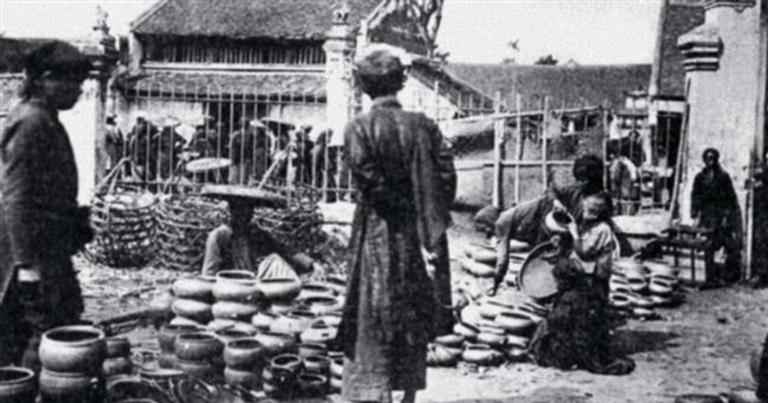
Evolution Through the Ages
From the Ly, Tran, and Le dynasties, Bat Trang’s ceramics have changed dramatically across several historical eras. The community developed into a hive of ceramic manufacture serving both home and foreign markets. Inspired by Chinese motifs, Bat Trang’s reputation and appeal grew even more when the Ming period produced its distinctive blue and white porcelain.
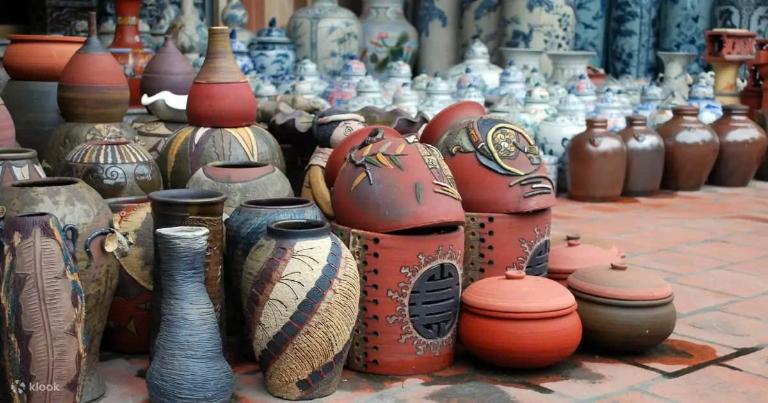
>>> Explore: History of Hanoi: A Journey Through Vietnam’s Capital
The Pottery-Making Process in Bat Trang Pottery Village
Generation after generation has passed on the painstaking and time-consuming craft of pottery making in Bat Trang. It calls for a sequence of complex motions, each needing dexterity and expertise.
1. Gathering Raw Materials
Gathering the required resources comes first in pottery-making. Potters in Bat Trang village find their clay locally. The choice of the clay is deliberate depending on its quality and fit for pottery. It must have a particular consistency and composition to guarantee the last result is aesthetically beautiful and robust.
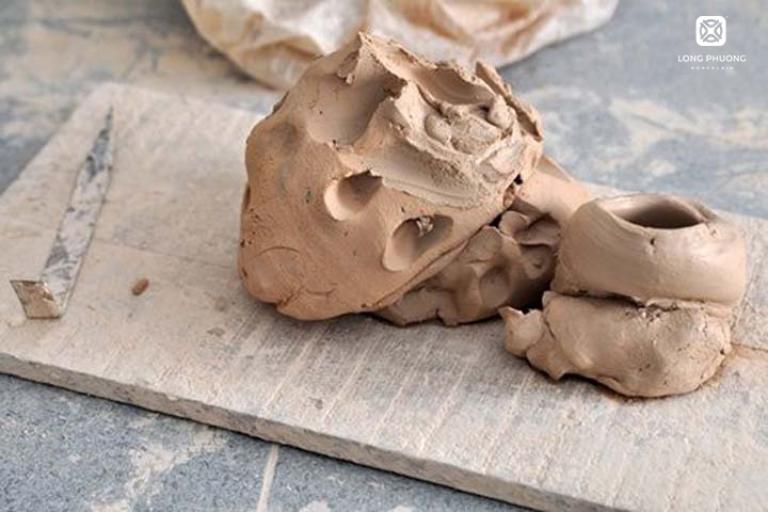
2. Preparing the Clay
The clay has to be ready for usage once it is acquired. This breaks down the clay particles and increases pliableness by means of a kneading and wedging operation. To attain the right consistency, the clay is also frequently blended with water.
3. Shaping the Pottery
Shining the clay is one of the most artistic and deft moves in pottery-making. Different forms are created by potters using a range of techniques including:
- Potter’s wheel: Potter’s wheel is a classic approach whereby a clay disc is spun on a wheel and shaped using the potter’s hands.
- Hand-building: This technique involves building the pottery piece by hand, using techniques such as coiling, slab construction, or pinching.
- Molding: For more intricate forms, potters may employ molds to produce a basic form that they subsequently hand-finish.
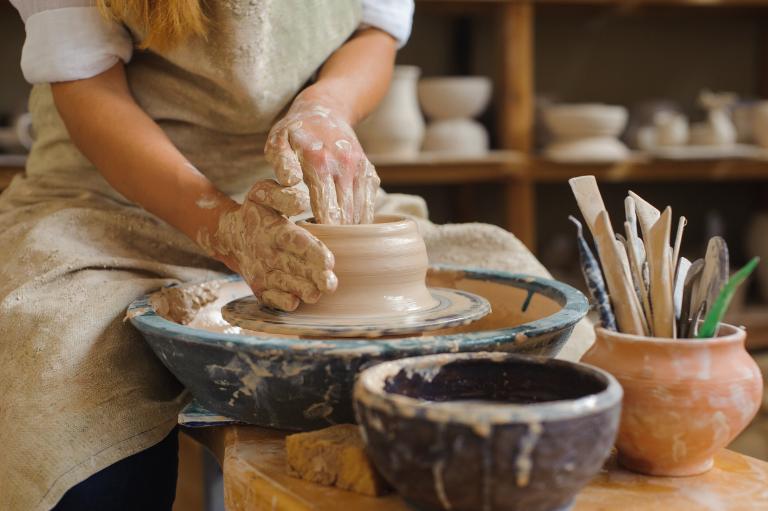
4. Drying
The ceramic has to be let dry following shaping. Preventing cracking and guaranteeing the pottery’s strength sufficient for the following stage depend on this technique. The thickness and size of the object will determine whether the drying process takes several days or perhaps several weeks.
5. Firing
Making pottery depends critically on firing. The ceramic is heated to great degrees in a kiln. This procedure increases the durability of the clay and hardens it. The type of clay and the intended final product’s desirable characteristics will affect both the fire temperature and duration.
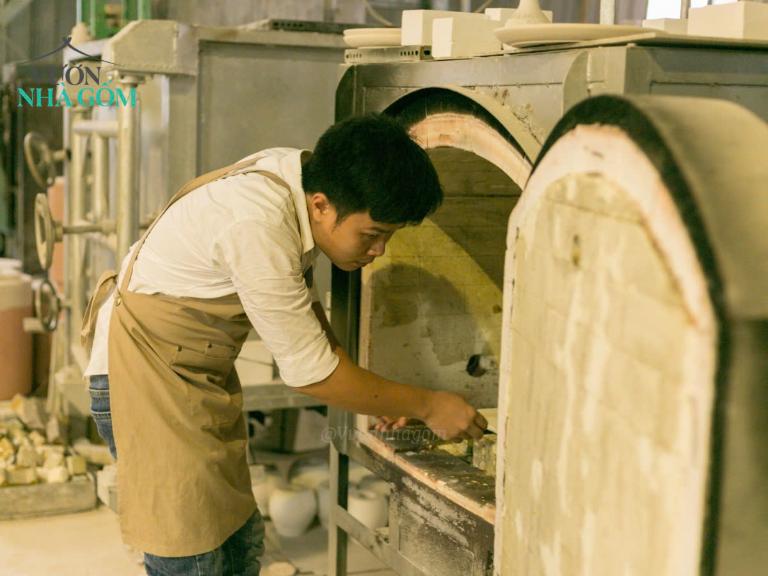
6. Glazing
Applying a coating to the pottery to provide a smooth finish and often a shiny look is known as glazing. Applied in a number of techniques, glazes might be clear, opaque, or tinted. The pottery is burned once more to solidify the glaze following glazing.
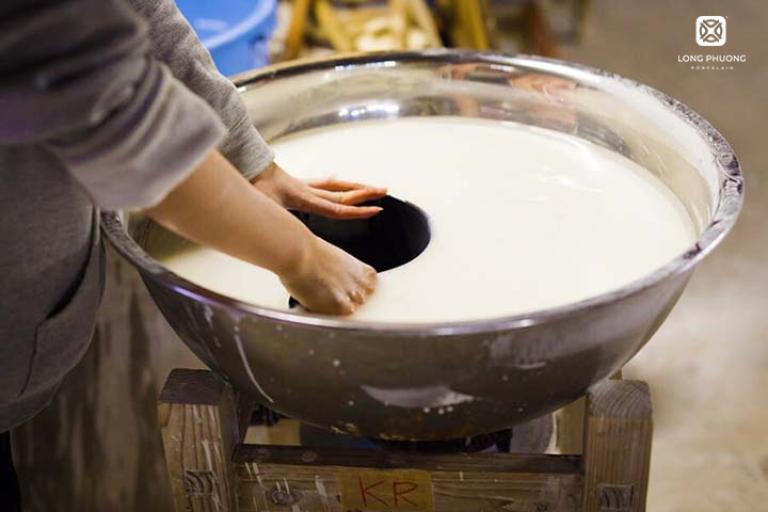
7. Decorating
Often the last stage in pottery-making is adding decorative accents. This can comprise carving, inlaying, or painting. The method of pottery being produced determines the applied techniques.
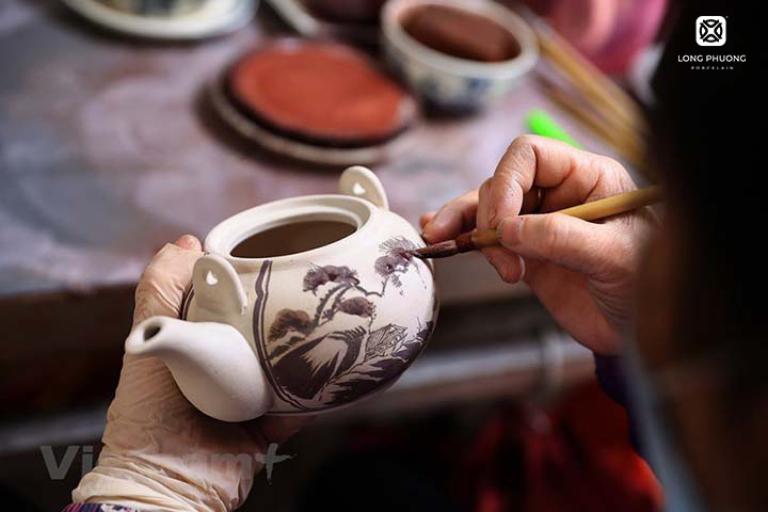
Top 3 Must-See Attractions in Bat Trang Pottery Village
Nestled close to Hanoi, Bat Trang Pottery Village is a cultural treasure providing guests with a special chance to really appreciate Vietnamese ceramics. Bat Trang is a must-see place with its friendly environment, practical activities, and varied attractions.
The Historic Heart of Bat Trang
Discover the historic Bat Trang village and step back in time. Honor the classic building and savor the timeless atmosphere. One highlight is taking part in a pottery session so you may try your hand at producing your own ceramic masterpiece. Under the direction of local artists, working with clay is a gratifying and unforgettable event.
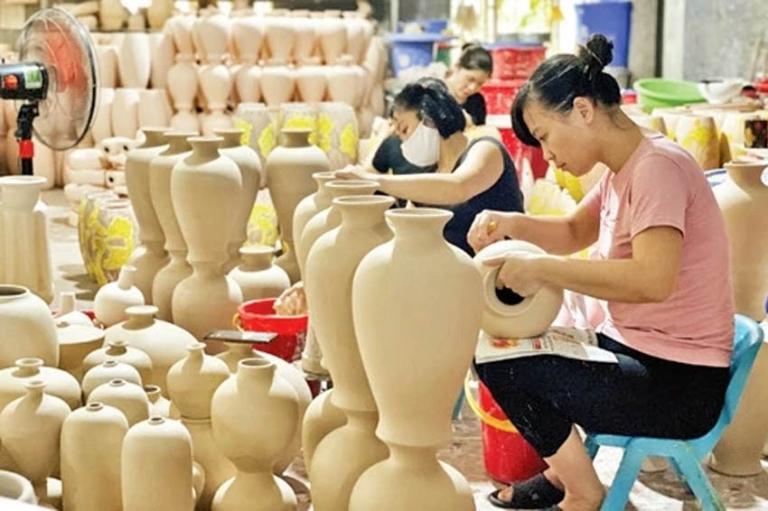
A Shopper’s Paradise: The Pottery Market
A wealth of ceramic marvels, the Bat Trang Pottery Market is covering more than 6,000 square meters, this vibrant market presents a wide range of handcrafted goods ranging from basic needs like cups and plates to complex sculptures and holy relics. The market is a must-visited place whether your search is for unusual mementos or just appreciation of the artistic ability.
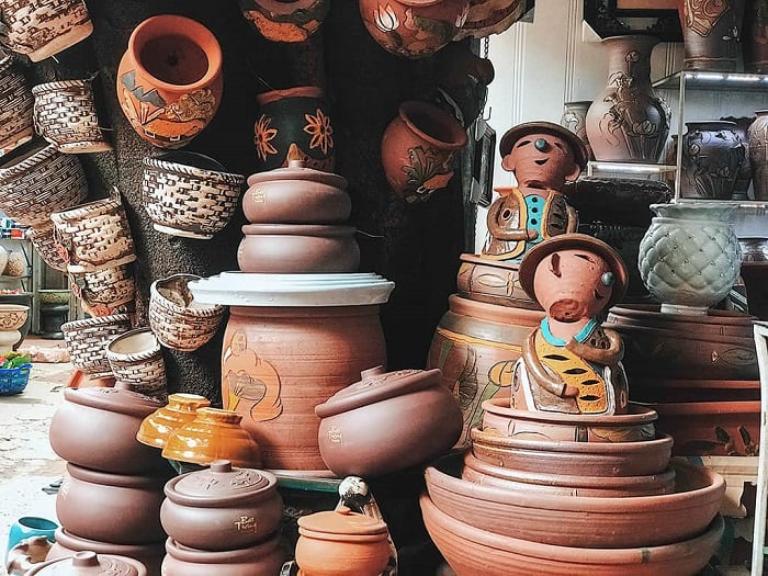
A Cultural Journey: The Bat Trang Pottery Museum
Art aficionados will find great appeal in the Bat Trang Pottery Museum. This six-story museum features an amazing collection of variedly styled and periodally relevant pottery. From conventional works to modern art, the museum presents a whole picture of Bat Trang’s ceramic legacy. Don’t miss the chance to admire the Red River panoramistically from the museum’s café.

Visiting the Bat Trang Pottery Village
How to Get to Bat Trang Pottery Village
Attaching Bat Trang is really simple! From Hanoi, you might catch a bus or taxi; the trip takes roughly thirty minutes. The experience is enhanced by the picturesque path beside the Red River, which offers a window of rural Vietnam. Renting a bicycle and biking over the countryside is a great approach for individuals who enjoy adventure to see the surroundings.
In addition, to enhance your experience, you can choose guided tours like Hanoi Motorbike Tours. They will provide a comprehensive overview of Bat Trang Pottery Village’s history and significance.
Best Time to Visit
Visiting Bat Trang would be best done during the dry season, from October to April. For wandering the hamlet, the colder and more pleasant temperature at this time makes is Visiting around the Lunar New Year can also provide a distinctive experience since many local artists display special items and take part in customary events.
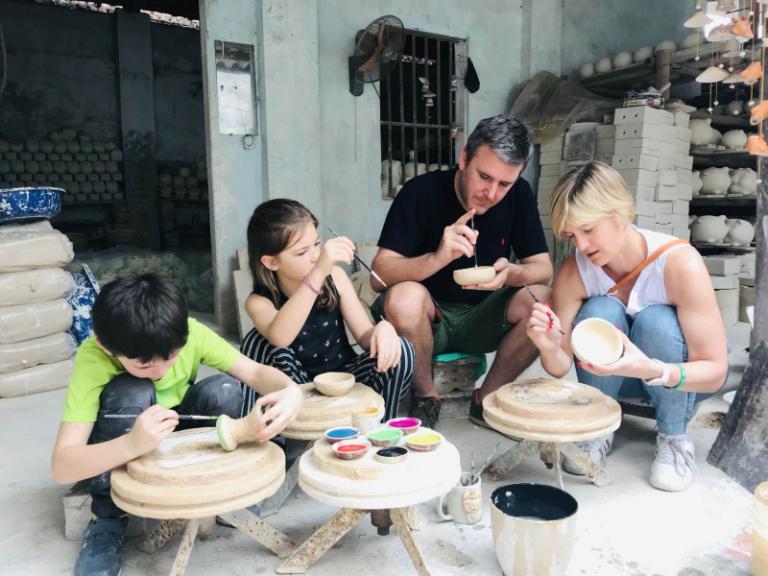
Bat Trang Pottery Village is a captivating destination that offers a deep dive into Vietnam’s rich cultural heritage. From its historical importance to the delicate technique of pottery manufacturing, the village captures Vietnamese workmanship. Make today your visit to explore the splendor of this old village!
Related Posts:














Be the first to comment!